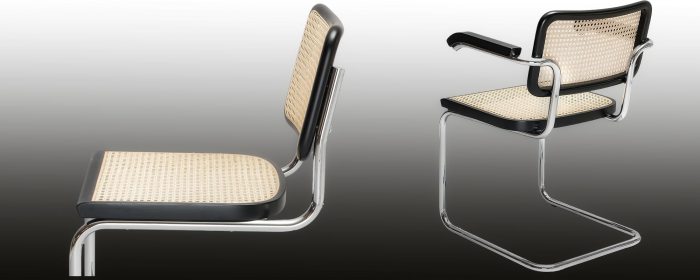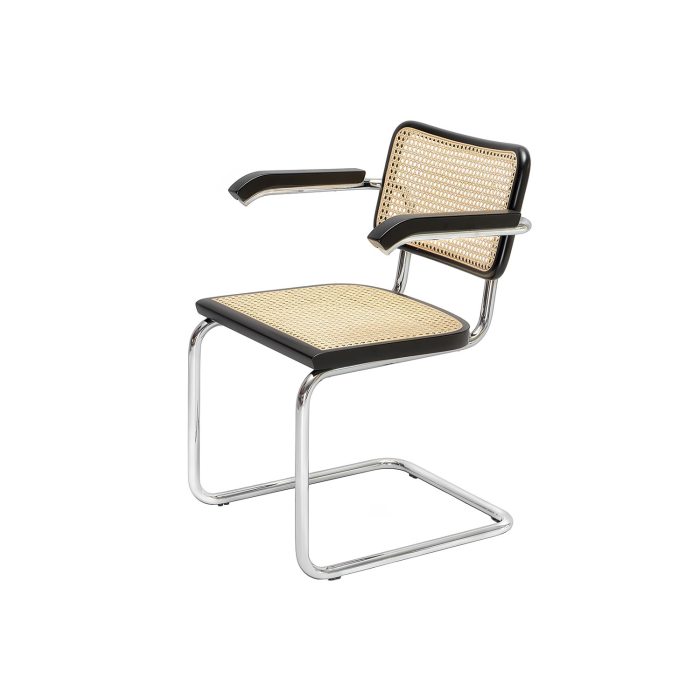Exploring the Timeless Elegance of Cesca Chair
Introducing the iconic Cesca chair, a timeless piece of furniture that has captivated design enthusiasts for decades. From its intriguing history to the innovative design elements, this chair continues to make a statement in the world of interior decor.
As we delve deeper into the construction, variations, and influence of the Cesca chair, we uncover a rich tapestry of creativity and craftsmanship that has stood the test of time.
Overview of Cesca Chair
The Cesca chair, also known as the Cesca side chair, is a classic design created by Marcel Breuer in 1928. It is renowned for its innovative use of materials and sleek, modern aesthetic that has stood the test of time.
Design Elements of Cesca Chair
The Cesca chair features a cantilevered frame made of tubular steel, a design element that was groundbreaking at the time of its creation. The seat and backrest are typically made of woven cane or upholstery, providing both comfort and style.
The combination of the steel frame and the flexible seat/back materials give the chair its distinctive look and feel.
Materials Used in Making a Cesca Chair
The primary materials used in making a Cesca chair include tubular steel for the frame, which is often chrome-plated for a polished finish. The seat and backrest are commonly constructed from either woven cane or upholstered fabric, adding a touch of warmth and texture to the sleek metal frame.
This blend of materials creates a harmonious contrast that defines the Cesca chair's iconic design.
Construction of Cesca Chair

The Cesca chair is known for its unique combination of traditional craftsmanship and modern design. Let's delve into the construction of this iconic chair.
Manufacturing Process of Cesca Chair
The manufacturing process of a Cesca chair involves several key steps. Firstly, the frame of the chair is constructed using a technique known as bentwood. This technique involves steam-bending solid beechwood to achieve the desired curved shape. The bentwood frame is then left to dry and set before further assembly.
Key Components of Cesca Chair
The key components used in assembling a Cesca chair include the bentwood frame, which forms the structure of the chair, and the cane or upholstered seat and backrest. The frame is typically connected using metal hardware to ensure stability and durability.
The combination of these components results in a lightweight yet sturdy chair design.
Bentwood Technique in Cesca Chair
The bentwood technique is crucial in creating the frame of a Cesca chair. By steam-bending beechwood, craftsmen are able to achieve the signature curved shape that defines the Cesca chair. This process not only contributes to the chair's aesthetic appeal but also enhances its structural integrity.
The bentwood frame is a testament to the skilled craftsmanship and attention to detail that goes into making each Cesca chair.
Variations of Cesca Chair

The Cesca chair design has undergone various adaptations and modifications over the years to suit different styles and preferences. Let's explore some of the variations of the iconic Cesca chair.
Original Cesca Chair vs. Modern Adaptations
The original Cesca chair, designed by Marcel Breuer, featured a frame made of seamless tubular steel and a seat/backrest combination of woven cane. Modern adaptations of the Cesca chair may include materials such as leather, plastic, or even different types of wood for the seat and backrest.
Some versions also feature cushions for added comfort, departing from the original design's minimalist aesthetic.
Designers’ Customizations Over Time
Designers have customized the Cesca chair in various ways to put their own spin on this classic design. Some have played with the proportions, making the chair more compact or elongated. Others have experimented with different colors and finishes, giving the chair a more contemporary look.
Additionally, designers have incorporated innovative technologies and materials to enhance the chair's comfort and durability while still paying homage to Breuer's original vision.
Popularity and Influence
The Cesca chair has achieved significant popularity in interior design circles, becoming a staple in modern and contemporary decor schemes. Its timeless design and versatility have contributed to its widespread appeal among designers and homeowners alike.
Influence on Contemporary Furniture Trends
The Cesca chair has had a profound influence on contemporary furniture trends, particularly in the realm of minimalist design. Its sleek chrome frame and elegant curves have inspired many modern furniture pieces, showcasing a blend of form and function that resonates with today's design sensibilities.
- The combination of tubular steel and cane in the Cesca chair has been emulated in numerous contemporary furniture designs, highlighting the enduring appeal of this innovative construction.
- The chair's lightweight and airy aesthetic has influenced the trend towards open, uncluttered spaces in interior design, encouraging the use of furniture that complements rather than overwhelms a room.
- Designers continue to draw inspiration from the Cesca chair's seamless integration of traditional craftsmanship with modern materials, showcasing a commitment to blending heritage with innovation.
Iconic Piece in Furniture Design
The Cesca chair has rightfully earned its status as an iconic piece in furniture design, thanks to its revolutionary approach to materials and construction. Designed nearly a century ago, it remains a timeless symbol of modernity and sophistication, revered by designers and collectors worldwide.
With its enduring popularity and lasting influence on contemporary furniture trends, the Cesca chair stands as a testament to the power of innovative design in shaping the way we interact with our living spaces.
Closing Notes
In conclusion, the Cesca chair remains a symbol of elegance and sophistication, blending tradition with modern flair. Its enduring popularity and influence in the world of furniture design solidify its status as a true classic.
Popular Questions
What materials are typically used in making a Cesca chair?
Cesca chairs are usually crafted using a combination of beechwood for the frame and cane for the seat and backrest, creating a harmonious blend of durability and style.
How has the Cesca chair influenced contemporary furniture trends?
The Cesca chair's innovative use of materials and sleek design have inspired modern furniture designers to incorporate bentwood techniques and minimalist aesthetics into their creations, shaping the current landscape of interior design.
What are some common variations of the Cesca chair design?
Variations of the Cesca chair include different finishes, colors, and upholstery options, allowing for personalized touches while maintaining the chair's iconic silhouette and structural integrity.




